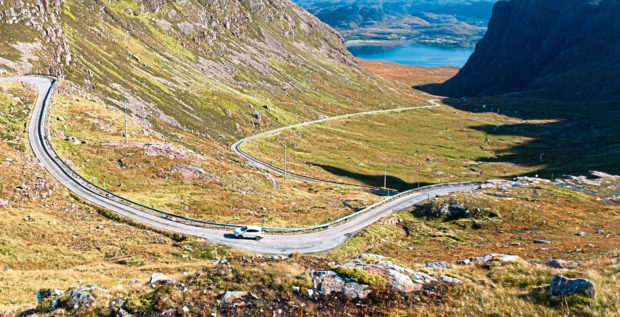With summer fully upon us – although the weather in recent weeks may suggest otherwise! – and the schools now on their summer break, many of us will be thinking about where we will be going on our holidays.
With increasing interest in staycations, along with rising costs and uncertainty about overseas holidays, for many this will involve a holiday somewhere in the UK.
Since the introduction of the North Coast 500, and thanks to the efforts of local groups like Venture North, the North Highlands is increasingly popular as a holiday destination. While this has been welcomed by many, it has also led to the voicing of concerns about the impacts of tourism on the local infrastructure and how we best address this.
The Chamber recently attended a pre-consultation event with the Highland Council to discuss the possible introduction of some form of transient visitor levy, more commonly referred to as a tourist tax. As part of the discussions, it became clear that there are a number of wider issues which need to be understood before any decision can be made, and we thought it would be valuable to highlight a few of these here.
While the current model that many have in mind is some form of additional charge on overnight stays in tourist accommodation, questions remain about how much this will benefit certain areas. Is it indeed fair that this industry sector is singled out to collect any levy with all the additional burdens that creates? The general desire that many have for any form of tourist tax is that revenue raised locally should be spent locally. The question is, would this model result in much revenue being available in certain areas?
We know that the trend of visitors on the North Coast 500 is for single-night stays, and that many are aiming to complete the route in just a few days. Depending on exactly how the area is divided up, this may result in some areas raising very little revenue at all, while still bearing the burden on their infrastructure.
This model may also have unintended consequences, driving more tourists to opt for unlevied options such as wild camping or campervan hire, which result in similar infrastructural burdens while generating less direct revenue – and, generally speaking, less local spend – than other overnight accommodation options. Perhaps some form of additional levy on these options would be worth exploring?
Another area to be considered is the cost of introducing and collecting any levy, and who will bear the burden of this. Many businesses are already operating to tight margins, and it is important that they are not financially burdened by any levy introduced.
Finally, there is a question as to whether a “one size fits all” option is appropriate. Locally, a levy on tourist parking at John O’Groats is due to come into force, with locals exempted and monies raised spent on the John O’Groats visitor experience. Could it be the case that levies applied only to certain areas where “overtourism” is a major concern – the Fairy Pools on Skye, for example – are more appropriate than a blanket levy? Likewise areas which see a significant volume of cruise traffic, like Orkney, may wish to explore options more suited to their circumstances.
This remains a complex and emotive issue for many across the North Highlands, with many tourism businesses against any kind of taxation which singles out their industry sector and creates additional business burdens. All those involved – individuals, businesses, and the public sector – need to take the time to consider all the issues and consider whether a transient visitor levy is the right solution for the challenges being experienced by the public purse.
Trudy Morris is chief executive of the Caithness Chamber of Commerce

